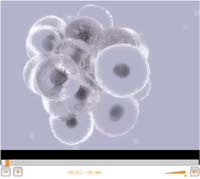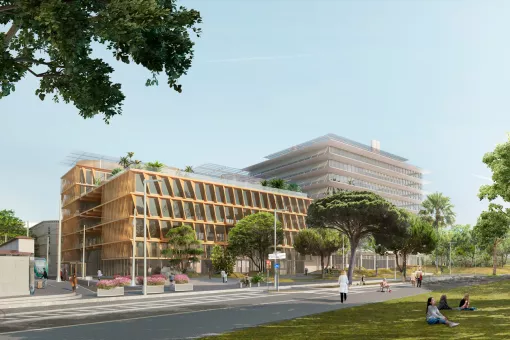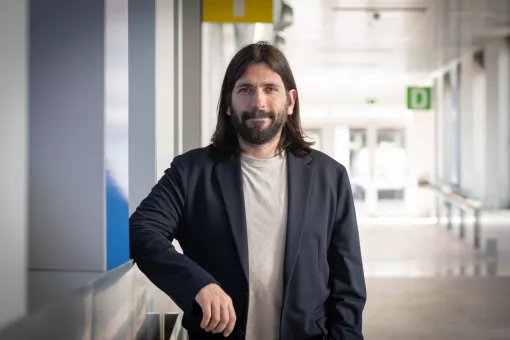Images
The development of organisms, the first step towards understanding human disease.
IRB Barcelona and the BBVA Foundation bring together a group of leading researchers in the formation and development of organisms in an International Barcelona BioMed conference.
How do cells communicate and organise themselves to form a lung? How does a cell know it must self-destruct in order to shape the fingers on a hand? Why does a cell divide and how does it know the number of divisions and the precise direction it must take to achieve the formation of the nervous system? The most basic questions on cell behaviour, the regulation of morphogenesis and embryonic development are keys to understanding cancer, genetic malformations, Alzheimer’s disease, Parkinson’s disease, heart diseases and all other pathologies.
Scientists working in developmental biology and morphogenesis search for the answers to fundamental questions regarding cell behaviour in the development of an organism, and provide knowledge of paramount importance to researchers devoted to specific diseases. The latest breakthroughs made in Morphogenesis and Cell Behaviour will be analysed by a select group of scientists brought together by the Institute for Research in Biomedicine (IRB Barcelona) and the BBVA Foundation on 6, 7 and 8 October, in a meeting included in the Barcelona BioMed Conference series and hosted by the "Institut d’Estudis Catalans". The meeting is organized by the researchers Jordi Casanova and Marco Milán, both at IRB Barcelona.
Marco Milán, head of the Cell and Developmental Biology Programme at IRB Barcelona and ICREA researcher, is categorical: "Our work has direct implications on health". As an example, Milán cites the scientists that work on colon cancer who need to know how the colon is formed, how it is subdivided, how the cells that form the colon behave... in order to later grasp how and why cancer arises.
Jordi Casanova, head of the Drosophila Morphogenesis Group at IRB Barcelona and CSIC researcher, explains, "to address these pathologies, medicine first needs to know how things work in a healthy system". For example, in a publication in the prestigious journal Nature Cell Biology, Casanova and his team have recently revealed the distinct molecular steps and cell changes that occur in cell migration during trachea development in the fruit fly. These findings may provide clues on how to stop the migration of metastatic cells, for example, from the breast to the lung, because these cells most probably use the same mechanisms to migrate. Milán emphasizes that "developmental biologists explain how the machinery works so that when a noise is heard we know where it is coming from".
Marc Krasnow, at Stanford University School of Medicine in the United States, one of the invited speakers in this Barcelona BioMed conference, is applying the findings discovered in Drosophila to explain lung formation in mice, research that he will present during the event. These studies may be crucial for a hot field in biomedicine, namely tissue regeneration.
Fish, flies and worms as models of the human system
Scientists in the field of development work with embryonic stages of a range of models, which serve as a guide to understand cell behaviour in the human body. These models include the worm C. elegans, the fruit fly Drosophila melanogaster, the zebra fish D. Rerio, in addition to more complex models of mice and chickens. The variety of animal and plant models help researchers to identify common cell behaviour in basic events such as division, migration, differentiation or cell death during development of shape. According to Marco Milán, "the resolution of the genome of diverse organisms has revealed a great number of genes that are shared between living organisms. Also, we are now seeing that cells communicate between each other and incorporate the information using the same mechanisms in distinct model systems". Milán studies wing formation in the fruit fly, which shares similarities with the formation of our central nervous system. This knowledge is producing data on genetic malformations and colon cancer.
The 20 invited speakers, including six Spaniards and who have made outstanding contributions to developmental biology in the country, will discuss cell behaviour in order to reveal the logic hidden behind the development of organisms. They seek to understand how proliferation, migration, differentiation and each of the properties and changes in cells that occur during the development of a life form affect the final form that a certain organism takes. Casanova explains "today we know a lot about genes, proteins, biochemistry and genetics. Now we have to fit this knowledge together at a higher level, namely the cell".
List of invited speakers and programme:
http://www.irbbarcelona.org/biomed/morphogenesis
For more information and interviews:
Sònia Armengou
IRB Barcelona Press Office
93 403 72 55
sonia.armengou irbbarcelona.org
irbbarcelona.org
Animación elaborada por el IRB Barcelona y la Fundación BBVA
Morphogenesis
Los seres vivos están constituidos por millones de células. Durante el desarrollo embrionario, las células reciben y leen instrucciones en su ADN para formar tejidos, órganos y un organismo completo.
Un ejemplo: un grupo de células que formarán una mano, primero se dividirán hasta obtener una masa determinada. Según su posición y un complejo sistema de comunicación entre ellas, se especializarán en células de piel, sanguíneas, de hueso, nerviosas... A su vez recibirán órdenes para dividirse, crecer, proliferar e incluso morir.
Estudiar esta red de señales y su comportamiento durante el desarrollo de organismos similares en sus genes al nuestro, es básico para entender las patologías humanas.
About IRB Barcelona
The Institute for Research in Biomedicine (IRB Barcelona) pursues a society free of disease. To this end, it conducts multidisciplinary research of excellence to cure cancer and other diseases linked to ageing. It establishes technology transfer agreements with the pharmaceutical industry and major hospitals to bring research results closer to society, and organises a range of science outreach activities to engage the public in an open dialogue. IRB Barcelona is an international centre that hosts 400 researchers and more than 30 nationalities. Recognised as a Severo Ochoa Centre of Excellence since 2011, IRB Barcelona is a CERCA centre and member of the Barcelona Institute of Science and Technology (BIST).







